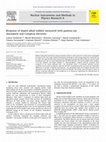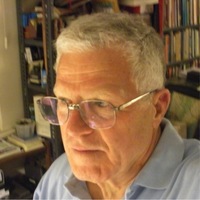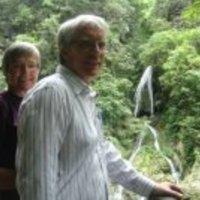Papers by Cristina Plettner

Physics Review 2004 C69, 2004
Nuclei in the A similar to 180 region have been populated and investigated in a series of multinu... more Nuclei in the A similar to 180 region have been populated and investigated in a series of multinucleon transfer and deep-inelastic reactions involving an 11.4 MeV per nucleon Xe-136 beam produced by the GSI UNILAC accelerator, impinging on a selection of tantalum and tungsten targets. The reaction products were released from a thermal ion source and subsequently mass selected using the GSI on-line mass separator. The unexpectedly high yield of gamma rays associated with the decay of the well established K-pi=37/2(-),t(1/2)=51.4 min isomer in Hf-177(72) and anomalous half-life characteristics associated with this decay lead to these data being interpreted as the beta(-) decay of a high-K isomer in the mother nucleus, Lu-177. By comparing the experimental findings with the predictions obtained from multi-quasiparticle blocked-BCS-Nilsson calculations, the proposed decay is suggested to be from a K-pi=39/2(-) five-quasiparticle state in Lu-177(71). A half-life of 7 +/- 2 min is determined for this beta-decay path which is estimated to have an excitation energy of approximate to3.9 MeV above the Lu-177 ground state.
Journal of Instrumentation, 2012
ABSTRACT Light yield nonproportionality and the intrinsic resolution of some low atomic number sc... more ABSTRACT Light yield nonproportionality and the intrinsic resolution of some low atomic number scintillators were studied by means of the Wide Angle Compton Coincidence (WACC) technique. The plastic and liquid scintillator response to Compton electrons was measured in the energy range of 10 keV up to 4 MeV, whereas a CaF2:Eu sample was scanned from 3 keV up to 1 MeV. The nonproportionality of the CaF2:Eu light yield has characteristics typical for inorganic scintillators of the multivalent halides group, whereas tested organic scintillators show steeply increasing nonproportionality without saturation point. This is in contrast to the behavior of all known inorganic scintillators having their nonproportionality curves at saturation above energies between tens and several hundred keV.
2011 IEEE Nuclear Science Symposium Conference Record, 2011
ABSTRACT The wide angle Compton coincidence technique was used to study non-proportionality of li... more ABSTRACT The wide angle Compton coincidence technique was used to study non-proportionality of light yield and intrinsic resolution of doped alkali halides. The tested scintillators were 1 inch × 1 inch cylindrical crystals of NaI:Tl, CsI:Na and CsI:Tl. The experimental setup comprised a High Purity Germanium detector and the tested samples coupled to a photomultiplier. The results obtained for Compton electrons are compared with the response of the tested scintillators to γ-rays. In this study we pointed out the correlation between non-proportionality at low energy range and intrinsic energy resolution measured for Compton electrons and γ-rays. Substantial difference in intrinsic resolution of doped NaI and CsI crystals was observed.

IEEE Transactions on Nuclear Science, 2013
ABSTRACT A functional prototype two-plane Compton camera array for localization and identificatio... more ABSTRACT A functional prototype two-plane Compton camera array for localization and identification of remote radiation sources, consisting of four PVT and four NaI(Tl) scintillation detectors with PMT readout, is presented. The large-volume, 76x76x76 mm scintillators provide a broad field of view for scattered photons and facilitate maximum efficiency at moderate cost. Each detector is equipped with a voxelSPEC, a compact electronic module that provides high voltage for the PMT, signal processing, detector stabilization, and an Ethernet communication interface. The voxelSPEC delivers list-mode event data with nanosecond precision timing over non-proprietary Ethernet and makes a system extension very easy. A software package has been developed for real-time data processing and image reconstruction. Advantages in hard- and software allow stable, unattended operation of the camera array for many days, and provide easy-to-read information on the radiation source in real time. Measurements with the prototype array have been performed for a few standard scenarios and geometries to verify the model predications obtained by Monte-Carlo simulations. Simulations have been further performed to explore larger camera arrays with 2x4x4, 2x8x8, 2x10x10, 2x13x13 and 2x16x16 detectors.
IEEE Transactions on Nuclear Science, 2007
IEEE Transactions on Nuclear Science, 2009
The performance of a silicon drift detector (SDD) with an integrated FET, delivered by the compan... more The performance of a silicon drift detector (SDD) with an integrated FET, delivered by the company PNSensor, Munich, Germany, was studied in gamma spectrometry at room temperature (23-25degC) with a LaBr3:Ce crystal of 6 mm diameter and 6 mm height. The SDD characteristics were compared with those measured with a Photonis XP5212 photomultiplier, a Large Area Avalanche Photodiode (LAAPD) of
IEEE Transactions on Nuclear Science, 2006
Experimental and modeling results are presented on the critical charge required to upset explorat... more Experimental and modeling results are presented on the critical charge required to upset exploratory 65 nm silicon-on-insulator (SOI) circuits. Using a mono-energetic, collimated, beam of particles the charge deposition was effectively modulated and modeled
IEEE Transactions on Nuclear Science, 2010

IEEE Transactions on Nuclear Science, 2012
Non-proportionality of light yield and energy resolution of Compton electrons in three scintillat... more Non-proportionality of light yield and energy resolution of Compton electrons in three scintillators (LaBr3:Ce, LYSO:Ce and CsI:Tl) were studied in a wide energy range from 10 keV up to 1 MeV. The experimental setup was comprised of a High Purity Germanium detector and tested scintillators coupled to a photomultiplier. Probing the non-proportionality and energy resolution curves at different energies was obtained by changing the position of various radioactive sources with respect to both detectors. The distance between both detectors and source was kept small to make use of Wide Angle Compton Coincidence (WACC) technique, which allowed us to scan large range of scattering angles simultaneously and obtain relatively high coincidence rate of 100 cps using weak sources of about 10 μCi activity. The results are compared with those obtained by direct irradiation of the tested scintillators with gamma-ray sources and fitting the full-energy peaks.
IEEE Transactions on Nuclear Science, 2010
Performance of a He-3 counter and a B-10 loaded liquid scintillator EJ309B5 has been studied in t... more Performance of a He-3 counter and a B-10 loaded liquid scintillator EJ309B5 has been studied in terms of neutron detection efficiency. The measurements were carried out in a mixed field of neutron and gamma radiation from an intense ( ~ 106 neutrons/s/4π)252Cf source. The response of both detectors to background and high intensity gamma radiation ( ~ 100 μSv/h at
IEEE Transactions on Nuclear Science, 2009
A novel concept for improving gamma ray spectroscopy in compact instruments is presented. The dua... more A novel concept for improving gamma ray spectroscopy in compact instruments is presented. The dual-range photon detector (DRPD) consists of a silicon drift detector (SDD) which is optically coupled with a LaBr3(Ce3+) crystal. In contrast to similar configurations investigated so far the SDD points to the radiation source. Pulse shape discrimination allows separating the distinct detection mechanisms which correspond to

Nuclear Instruments and Methods in Physics Research Section A: Accelerators, Spectrometers, Detectors and Associated Equipment, 2013
Relative light yield and intrinsic energy resolution of NaI:Tl, CsI:Na and CsI:Tl crystals were i... more Relative light yield and intrinsic energy resolution of NaI:Tl, CsI:Na and CsI:Tl crystals were investigated by means of the wide angle Compton coincidence technique in wide energy range from several keV up to 1 MeV. The experimental setup consisted of a high purity germanium (HPGe) detector and the tested scintillators were put at a close separation from the HPGe detector. The tested samples were cylinders of 25 mm diameter and height coupled to a photomultiplier. Compton electron responses were compared to the results obtained with gray absorption peaks. A correlation between intrinsic resolution of the tested scintillation materials and their nonproportionality was observed. Substantial differences in intrinsic resolution measured for gray absorption peaks and Compton electrons were registered in the energy range between 50 keV and 200 keV. The results were discussed in terms of electron scattering, pointing to d-ray production as an important contribution for determination of scintillator intrinsic resolution.











Uploads
Papers by Cristina Plettner